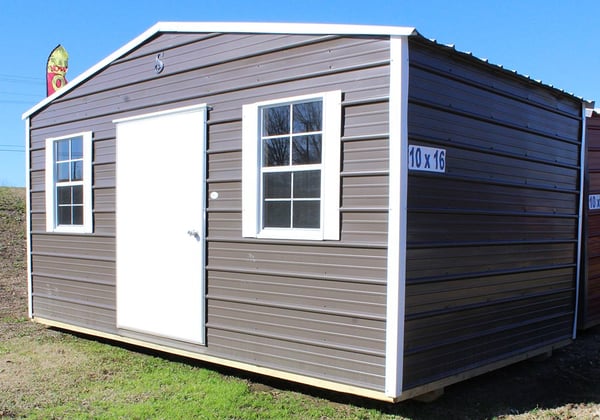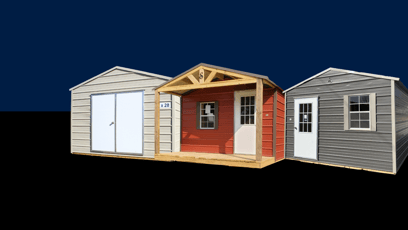Adding a storage shed to your outdoor space is always a great option. But without proper waterproofing, it can wear down from the elements, leading to potentially expensive damage — not only to the shed itself but also to what’s stored inside. Today we’re exploring the importance of waterproofing with a step-by-step approach to safeguarding your storage shed against water damage.
Assess its Current Condition
Before diving into waterproofing, it's crucial to assess your shed's current condition. Check for existing water damage, such as leaks, mold, and rot. Identify potential entry points for water, including gaps, cracks, and damaged roofing. Understanding the shed’s potential vulnerabilities will help to guide your efforts as you continue the waterproofing process.
Choose the Right Products
Choosing the right products is key when preparing to waterproof your shed. There are various options available, including sealants, waterproof paint, weather stripping, and roof coatings. Consider factors such as the material of your shed and weather conditions when selecting the best products for your specific needs.
Prep for Waterproofing
Prepare your shed by thoroughly cleaning both the interior and exterior. Remove all items stored inside and clear debris around the exterior. Repair any existing damage, and ensure proper ventilation to prevent moisture buildup inside the shed.
Step-by-Step Waterproofing Process
Follow these steps to waterproof your storage shed:
Step 1: Apply Sealants and Waterproof Paint
Seal all gaps, cracks, and seams using high-quality sealants. Then, for an added layer of protection, apply waterproof paint to both the exterior and interior of the shed. Choose paint specifically designed for outdoor use that is capable of withstanding exposure to the elements.
Step 2: Install Weather Stripping
Install weather stripping around doors and windows to prevent water from seeping in. This simple yet effective measure can significantly enhance your shed's weather resistance.
Step 3: Coat the Roof for Added Protection
Pay special attention to your shed's roof. You’ll want to apply a weather-resistant coating to protect against rain and snow, but, first, ensure the coating is suitable for the roofing material (whether wood or metal) and provides long-lasting protection.
Maintenance Tips for Long-Term Waterproofing
Inspect Regularly
Regularly inspect your shed for any signs of water damage. Address issues promptly to prevent further deterioration.
Reapply Waterproofing as Needed
Over time, the effectiveness of sealants and coatings may diminish. Reapply waterproofing products as needed, especially after extreme weather conditions.
Address Issues Promptly
If you notice any leaks or water entry points during inspections, address them promptly. Timely repairs can prevent extensive damage.
More to Consider
If you’re looking for more water-tight methods than those we’ve listed above, there are a couple additional measures you can take:
Elevate the Shed
Elevating your shed slightly prevents water from pooling around its base. This is particularly important if your shed is situated in an area prone to flooding.
Improve Drainage
Ensure proper drainage around the shed by installing gutters and downspouts. Redirect water away from the shed to minimize the risk of water accumulation.
Waterproofing your storage shed is a proactive and essential step in ensuring its longevity and making sure your stored items are protected for the long haul. By following the outlined steps, choosing the right products, and staying consistent with maintenance, you can safeguard your shed against the elements, especially water.



Leave a Comment